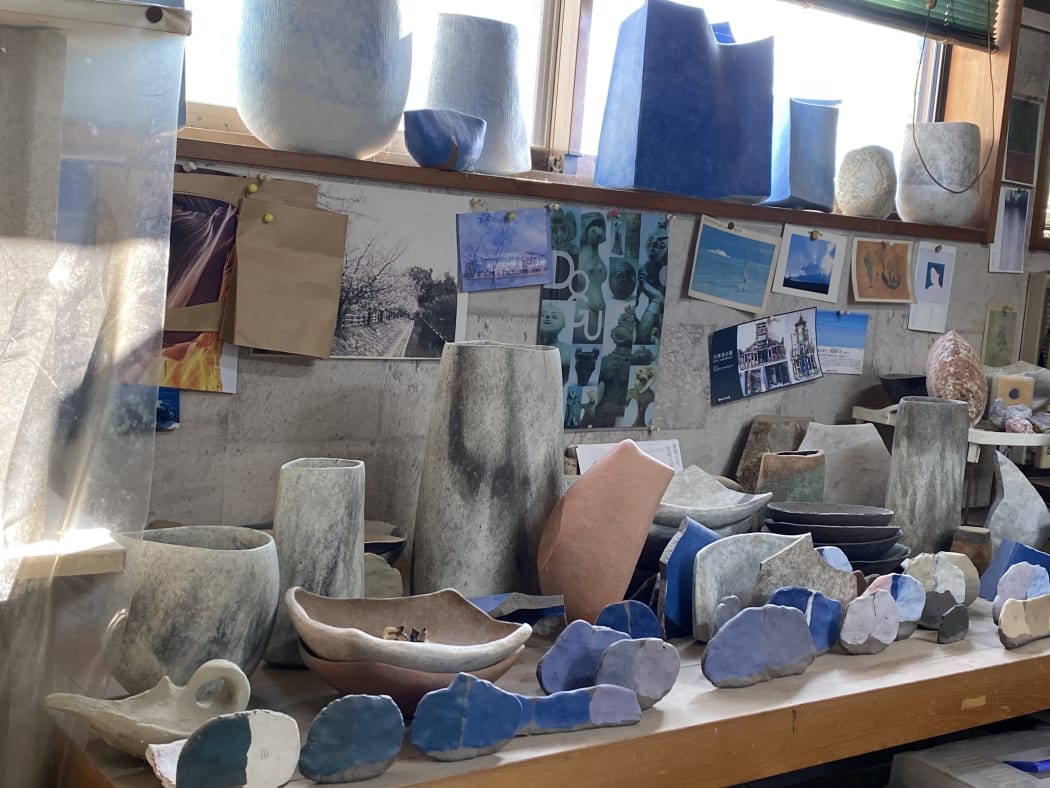
Mitsukuni Misaki returns to Ippodo Gallery New York for a second solo exhibition of his grand stoneware. FLOATING VESSELS features the ceramicists newest works—as well as a few pieces from his 2017 show—that draw on the history of ancient Japanese aesthetics.
Ippodo Gallery New York director Shoko Aono traveled to his studio the eastern Chiba region, where he answered questions about his process and welcomed a studio tour. Their conversation was conducted in Japanese and translated into English.
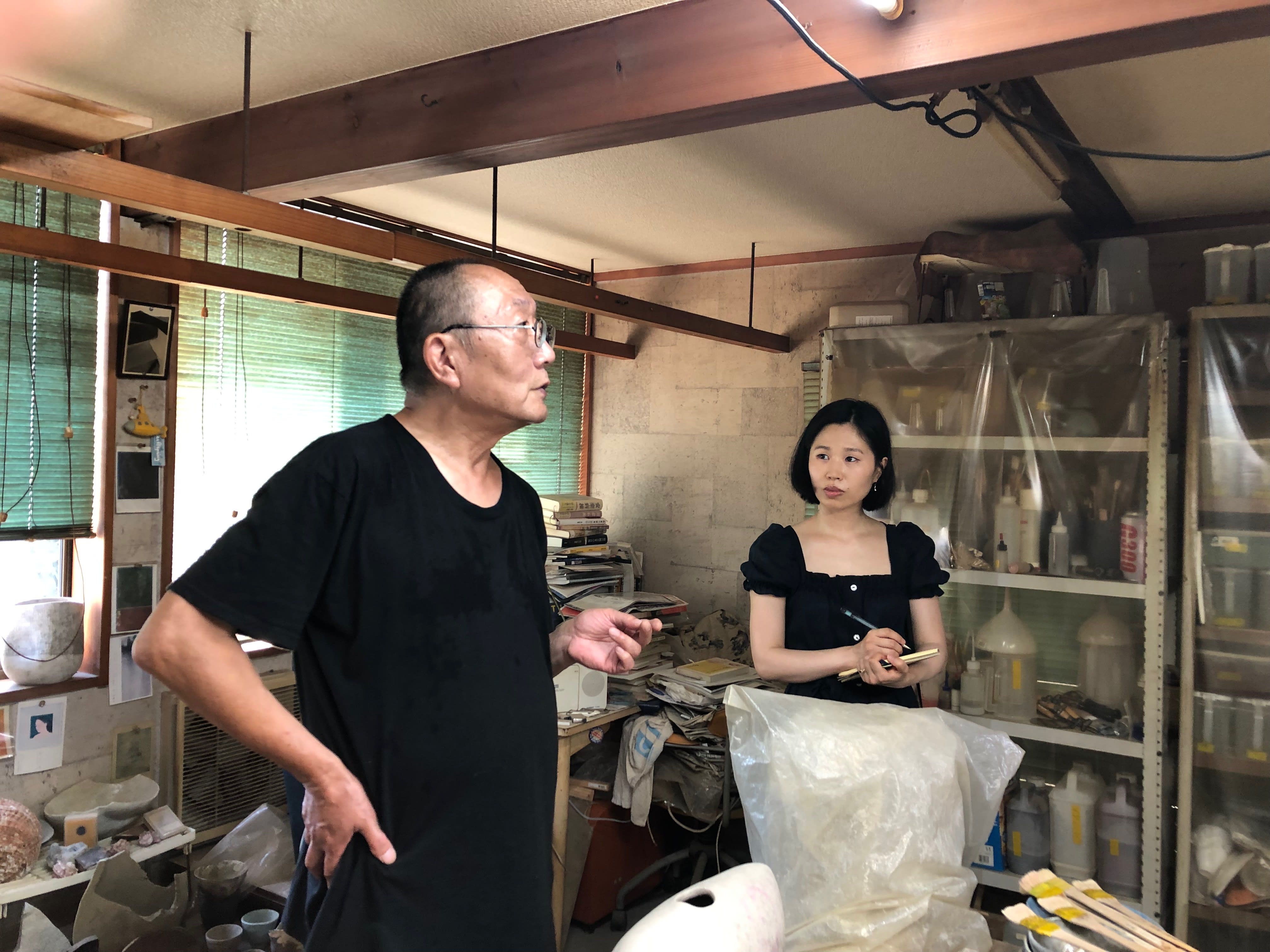

Before Shoko and Misaki began their interview, the artist conveyed a message:
In ‘Rilke's Letter to an Imprisoned Acquaintance,’ there is a passage in which he is told to ponder a wall. The scene has stuck with me to this day. I have been making ceramics for almost 50 years and have produced many sorts of works. Life is uninterrupted and continuous. Days, seasons, and years; those things do not change in the past or present. All of us are living within our own conditions on this Earth. That is all there is. So, I search for the landscape before the formation of language. In doing so, I feel the boundaries between us all will disappear.
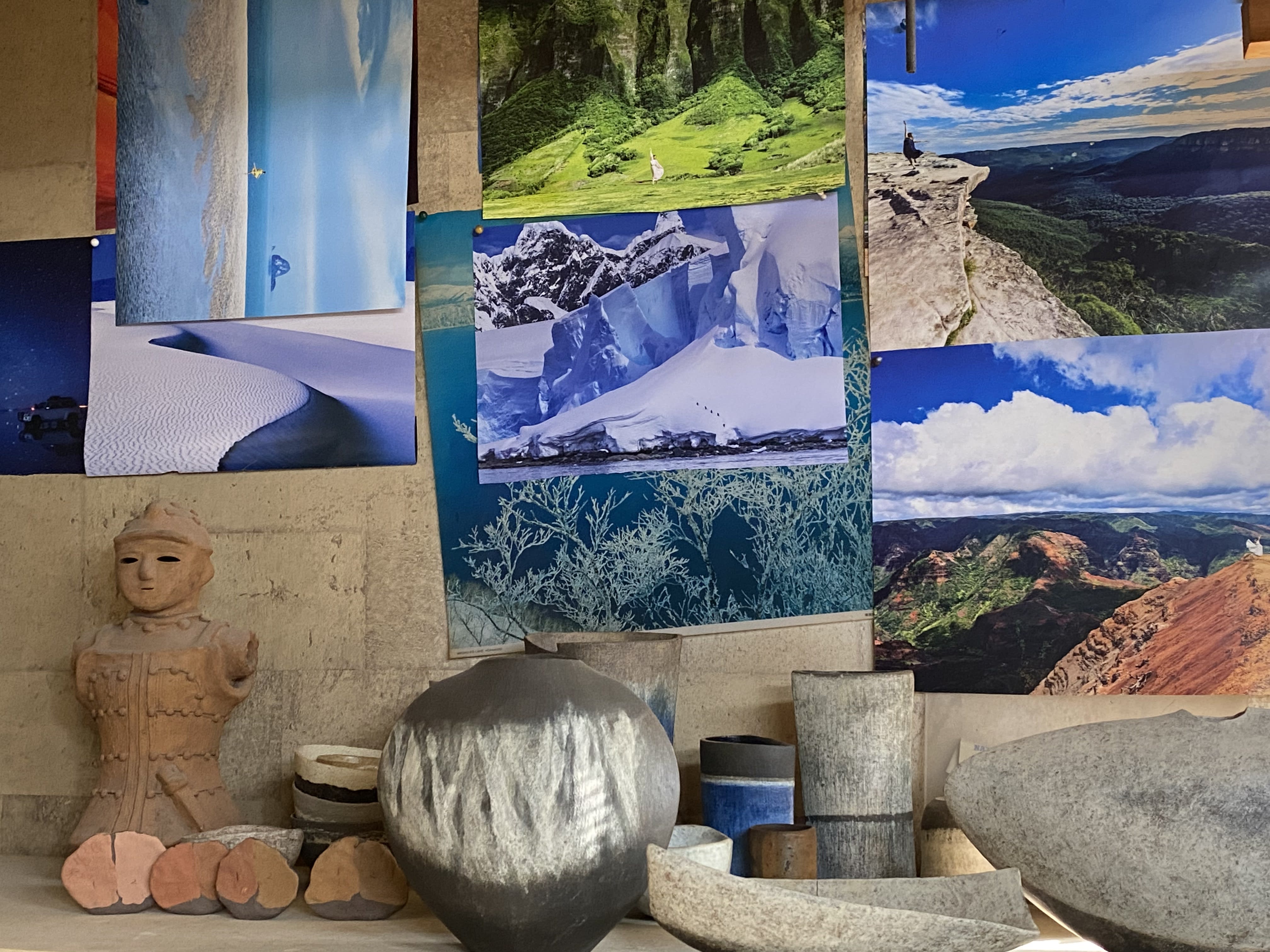
Question 1: Please share a memory of ceramics. Maybe at Fujio Koyama-sensei’s kiln?
Mitsukuni Misaki (MM): When I was 21, I visited Mr. Koyama's kiln. I saw his works in a corner of his studio's earthen floor (土間 'doma'), and they looked very natural. This was my first encounter with ceramics. When I went to Okinawa, I saw a water bottle placed at the eaves of a private house, and I learned about the true nature of pottery.
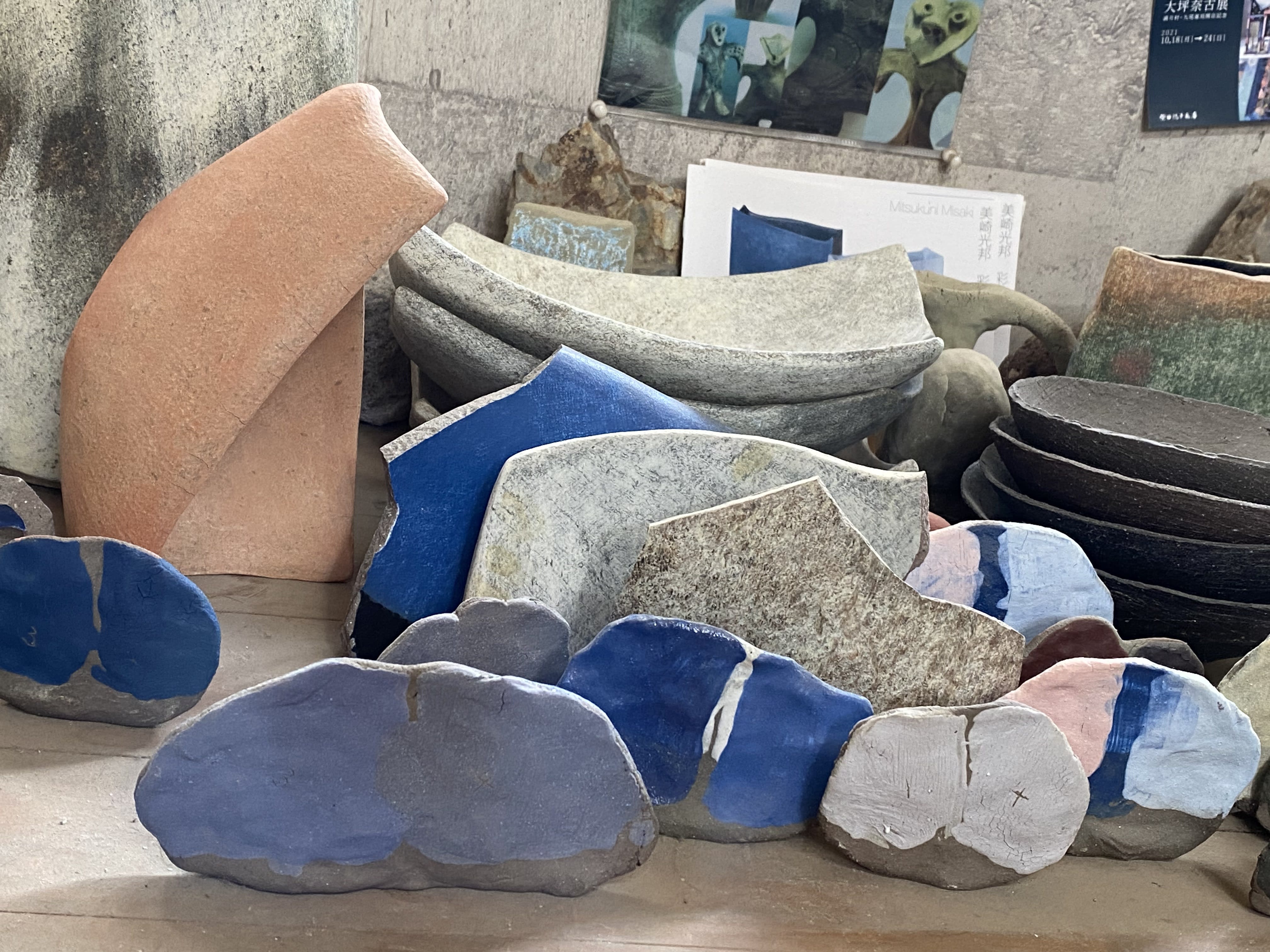
Q2: Please describe the influences that inspire sensei’s work. You mentioned Neanderthals, please elaborate.
MM: I believe that vessels are an important tool for human beings, both for carrying and storing things. With the development of civilization, it has become difficult to notice the origin of vessels, but I feel a sense of security when I have them around me. The people who invented them are admirable.
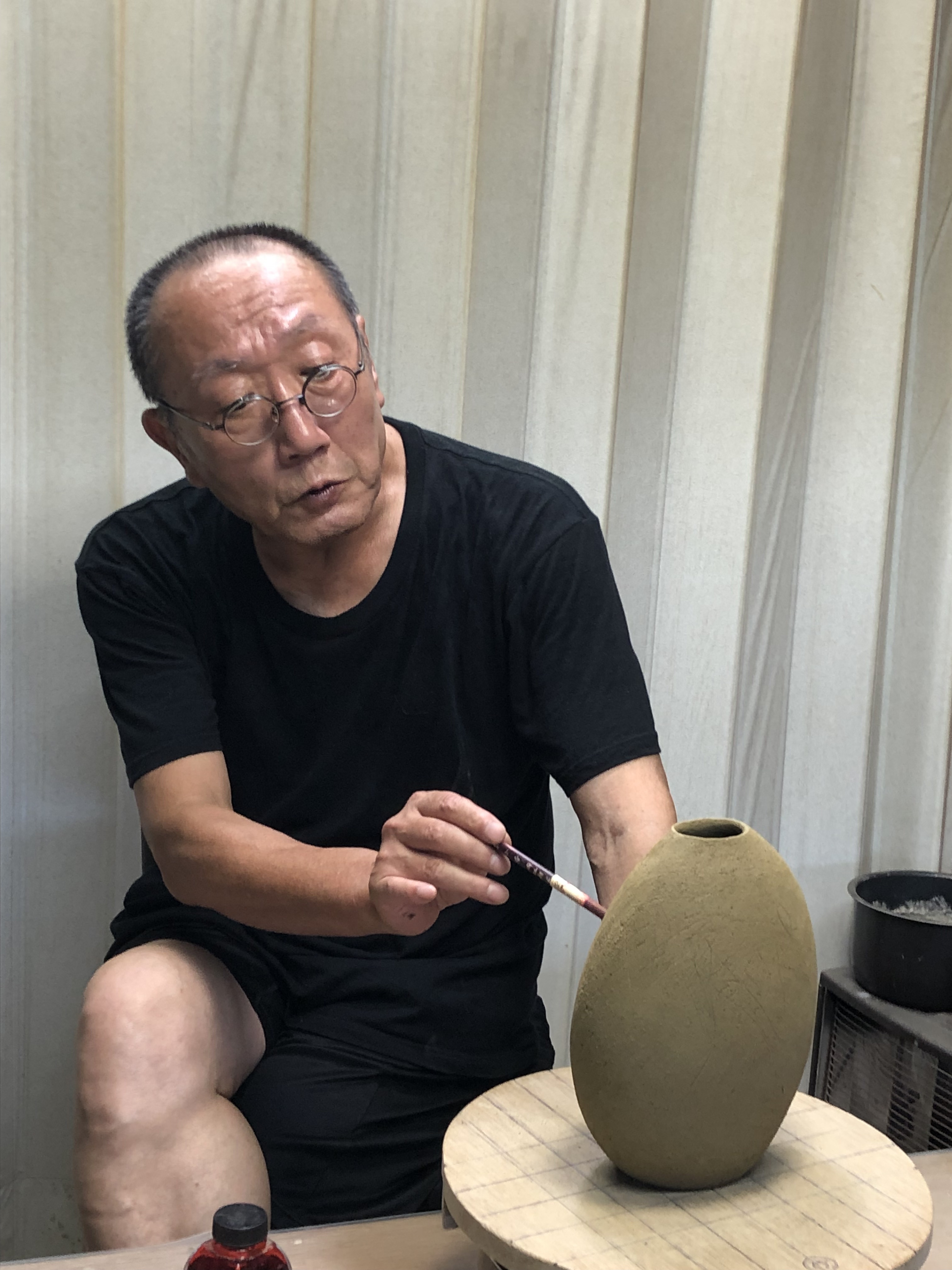
Q3: Please describe the qualities sensei most treasures about saiyuudeiki.
MM: Pigment, clay, and glaze are mixed in just the right amount to decorate the piece. It does not depend on the firing conditions.

Mitsukuni Misaki, Color-Glazed Mud Vessel XIV - 彩泥器, 2023 (C27156)
Q4: Please share the process of creating a deep blue piece, versus a lighter blue piece.
MM: There is no difference in the production process. Cobalt is the main coloring element for deep blue, and Copper Oxide for pale blue.
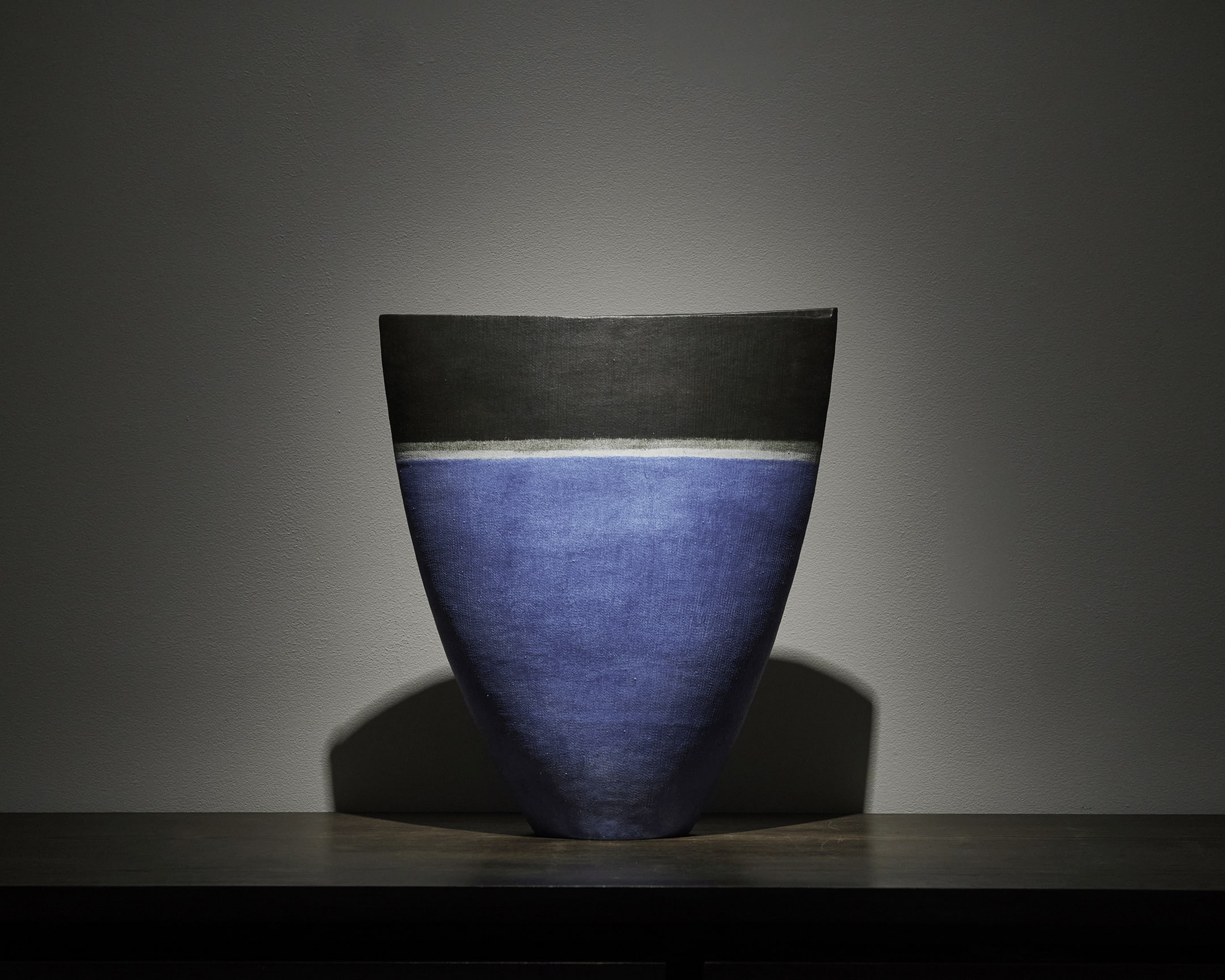
Mitsukuni Misaki, Blue Color-Glazed Mud Vessel - 彩釉泥器, 2017 (C16856)
Q5: Misaki-sensei’s works seem to be levitating, yet they are very heavy as they are made from stoneware. Please discuss your decisions to work in this lightweight-looking and floating shape.
MM: Early pieces were very thin. When I tried to make complex forms, I needed more strength in the parts, and as a result, they became heavier. Also, I am not really a fan of having a strong presence. I feel that a light object will take me far away.
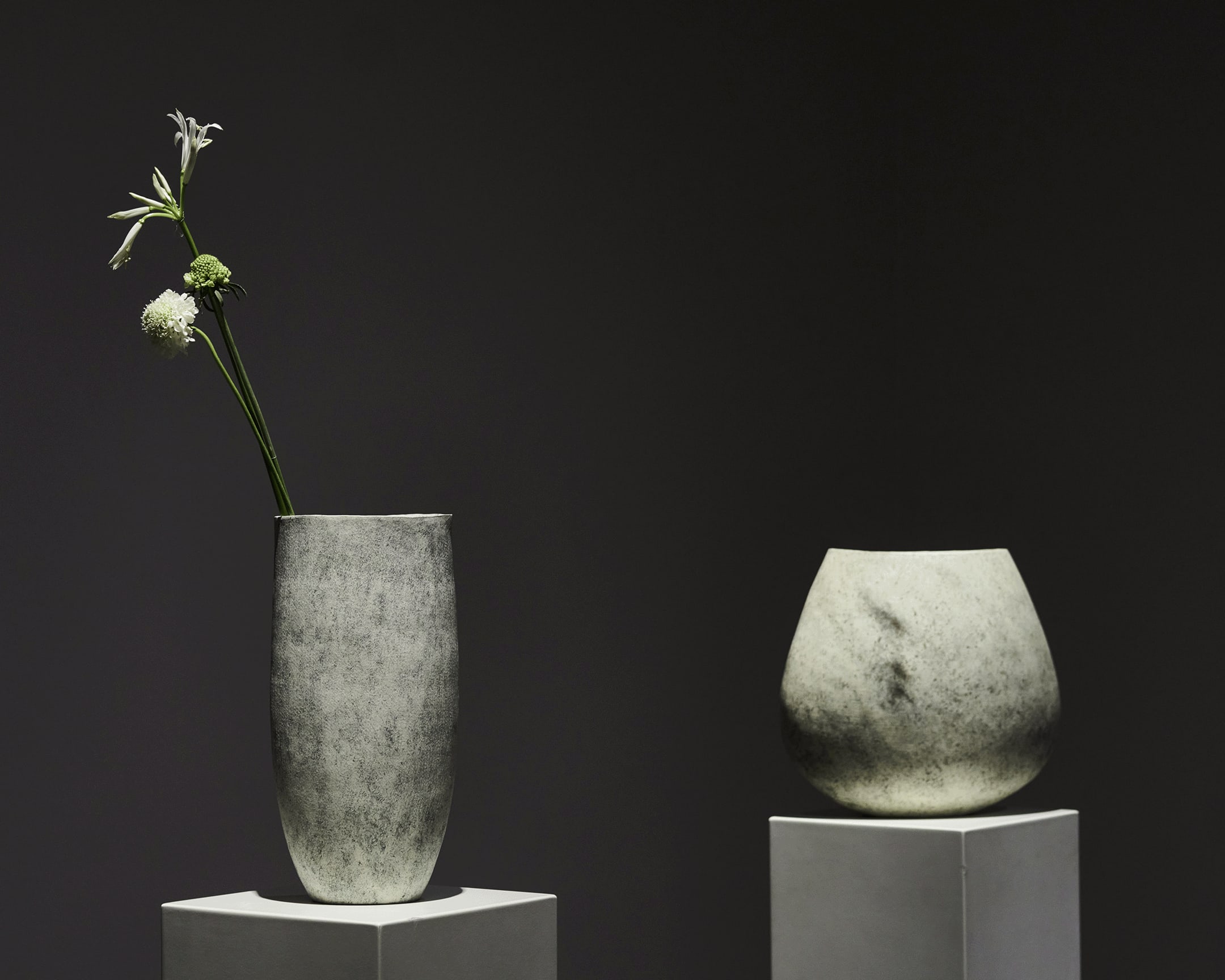
Mitsukuni Misaki, Color-Glazed Mud Vessel XXIII and XIII, 2023 (C27158; C26726)
Q6: Please tell us how you decided to settle back in Chiba after traveling to study ceramics.
MM: I thought that the area around the city, like Tokyo, would provide a more opportunity to showcase my work.

Mitsukuni Misaki, Color-Glazed Mud Vessel XXI - 彩釉泥器, 2023 (C27155)
Q7: Do you prefer working at the large scale, or those smaller works?
MM: I feel comfortable when I am making a piece about the size of the one I am exhibiting.

Mitsukuni Misaki, Color-Glazed Mud Vessel - 彩釉泥器, 2017 (C16976)
Please join us at 32 E 67th Street, 3rd Floor on the Upper East Side for a grand showing of Mitsukuni Misaki saiyuudeiki vessels. The fruits of his countless experiments, deep sentiments, and historical inspiration are on full view at Ippodo Gallery New York until February 15, 2024.
